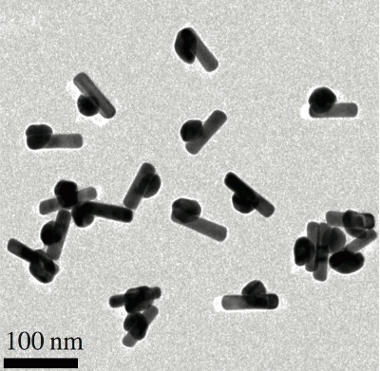Using AI to control energy for indoor agriculture
30 September 2024
Published online 28 October 2015
A novel technology uses nanoparticles that ‘trick’ light into near-complete absorption, making it one of the thinnest dark materials.

© Chanxgu Liu and Jianfeng Huang
The team, from King Abdullah University of Science and Technology, developed ‘nano-absorbers’ made of tiny nano-sized spheres connected to the centres of nano-rods. When these nano-absorbers are randomly dispersed into a liquid or on to a solid surface, they give the ‘impression’ to incoming light that it has entered an intractable maze, explains KAUST electrical engineer Andrea Fratalocchi.
Since nothing that can provide reflection lies in the path of the light, all electromagnetic energy entering this maze is completely absorbed, regardless of the light spectrum and input conditions, he says.
Dark materials with the capacity to absorb a significant amount of light are not new. Nanoabsorbers made of carbon nanotubes have achieved 99.95% absorption in structures that are 0.8 millimetres thick, for example. Fratalocchi says their technology, however, is the first to use geometry to create the illusion of a never-ending maze, achieving 99.8% absorption in only ten-micron-thick materials — two orders of magnitude thinner than before. This will allow the development of more compact devices.
There is huge potential for this sort of technology. The KAUST team is already employing their nano-absorbers to harvest energy, which can be converted to thermal or electrical energy “with really impressive energy conversion efficiencies,” says Fratalocchi.
Another possible application is invisibility cloaks. “Just like the black monolith in the famous [1968] Kubrick movie 2001: A Space Odyssey, our nanostructures are completely invisible to radar since radiation is not reflected. A plane covered by these structures would be completely obscured, regardless of its shape and size,” says Fratolocchi.
They can also be used as removable ink, by using sound waves set at specific frequencies, he says. This would allow both the ink and paper to be fully recyclable.
In the study, the researchers also dispersed their nano-absorbers in a special dye that amplifies light signals. Light was pumped into the dye and the absorbed energy spontaneously condensed, generating single-color laser-like pulses but without many of the special design elements present in laser technologies. This property could be of benefit for energy-harvesting and photovoltaic technologies.
The team’s ongoing research involves using the technology in new types of water desalination units and to produce solar fuels.
doi:10.1038/nmiddleeast.2015.198
Huang, J. et al. Harnessing structural darkness in the visible and infrared wavelengths for a new source of light. Nature Nanotechnology http://dx.doi.org/10.1038/nnano.2015.228 (2015).
Stay connected: